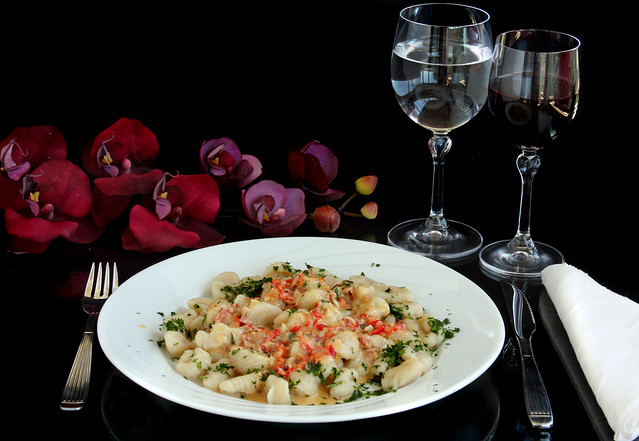 |
| potato gnocchi with a leek and tarragon cream sauce. © 2011 Diego Bianchi. |
(puedes leer esta receta en español en Contacto con lo Divino)
Getting used to new kinds food was one of the aspects of my new life as an expat in the Netherlands that proved to be one of the hardest things I had to cope with. Nine years after moving out here from Argentina, I still miss my food from home. I guess that even when you adapt to your new country and assimilate and embrace the new culture, food is still something that you never quite let go. The food from home is like your own family, your people - no matter how far from home you are, you still carry them close to your heart.
Diego is a porteño, a native of the capital city of Argentina, Buenos Aires. Food and photography are two of his passions and he always brings these two together when he posts his recipes on his blog, Contacto con lo Divino. Every time I see the fantastic photos of his food I feel a sudden and strong nostalgia for home, because he usually cooks dishes that are familiar to me, to my Argentinean soul and palate.
Here is one of his pasta recipes that caught my attention. I often crave for ñoquis (as we call gnocchi in Spanish) at home and I am trying Diego's recipe tomorrow for ñoquis del 29 (Gnocchi Day every 29th of the month) ... an Argentinean tradition I will tell you all about when I post my take on this recipe soon.
DIEGO'S RECIPE: (serves 4-5 people)
Ingredients for the ñoquis:
1kg potatoes - 500g flour, and some extra for kneading - 1 egg - 1tbspoon salt - nutmeg, to taste.
Ingredients for the sauce:
100g smoked pancetta or streaky bacon - 400g single cream - 1 1/2 tbspoon dehydrated leeks with tarragon mix or if you can't find this mix, use 1 tbspoon dried tarragon and 1 chopped stalk of leek (the white stalks, it tends to be overpowering, so if you don't like your sauce too oniony, just use half a stalk) - 2 cloves of garlic - 1 red pepper - 100ml white wine - 2 teaspoon flour - a bit of chopped parsley.
Preparation:
Making the ñoquis:
- Choose potatoes that are roughly of the same size so that they cook evenly. Wash them well and put them in a pan with cold water and some salt to boil. You don't need to peel the potatoes, for the skin will prevent them from absorbing too much liquid. If this happens, you will need to add more flour and this will definitely ruin the taste of the ñoquis.
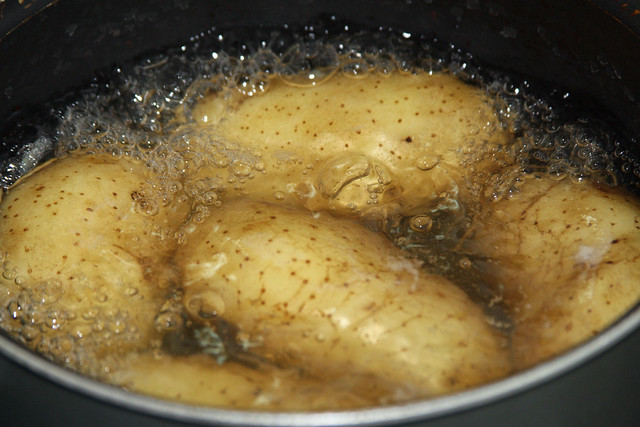 |
| © 2011 Diego Bianchi |
- Cooking time will vary depending on the size of the potatoes - roughly about 25 minutes. To check if they are ready, insert a skewer in the potatoes and it should go in easily without any resistance. Try not to overcook them or again, they will absorbe too much water.
- Drain the water and peel them right away. Cooks normally have asbestos fingers but if they're too hot use a fork and a knife or better even, a ricer if you have one; push the potatoes through it and the skin will stay in the ricer.
- Start mashing the potatoes while they're still hot; if they are already getting cold they will be too hard to mash and you'll get lumps.
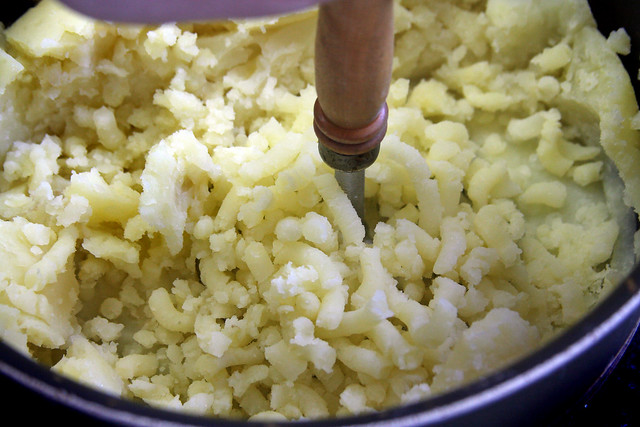 |
| @ 2011 Diego Bianchi |
- Add a tablespoon of salt, an egg and season with nutmeg. Mix all the ingredients well with the potato masher.
- When everything is properly mixed, it's the time to place the dough on a floured surface. Knead it adding the flour little by little until you have a dough that is smooth and doesn't stick to your hands.
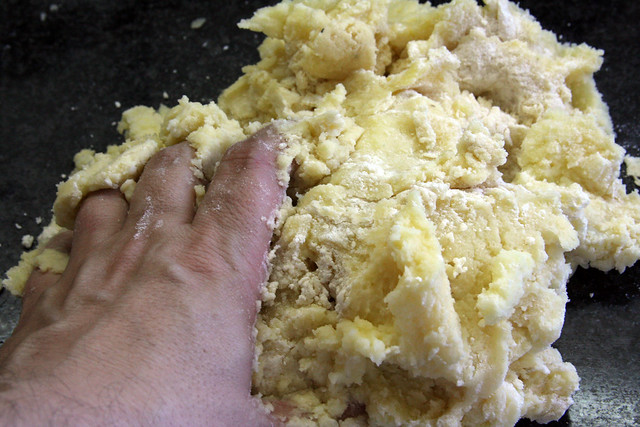 |
| © 2011 Diego Bianchi |
- Leave the dough to rest until it has cooled down completely.
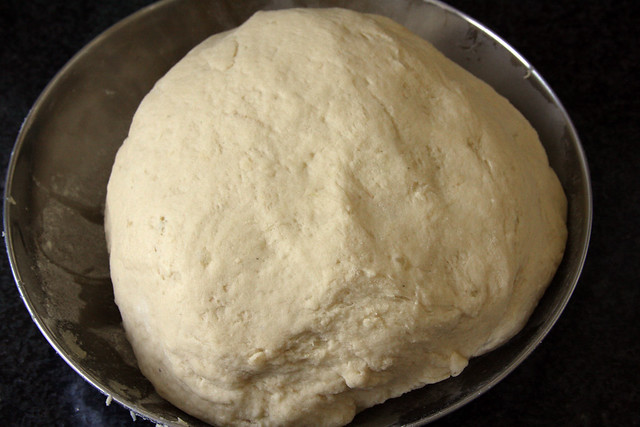 |
| © 2011 Diego Bianchi |
- Take a portion of dough and roll it with your hands to form a long thin sausage, dusting the surface and the dough with a bit of extra flour.
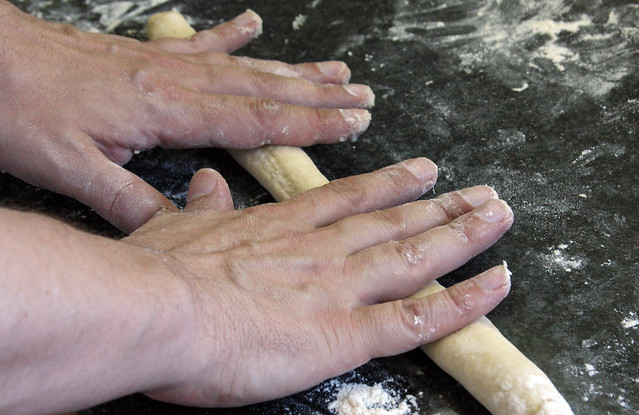 |
| © 2011 Diego Bianchi |
- Cut the dough into small portions of 1,5/2cm approximately. Do the same with the rest of the dough.
 |
| © 2011 Diego Bianchi |
- Take the little portions of dough one by one, pressing them gently and sliding them down a fork or a ñoqui board. Once shaped, place the ñoquis on a floured surface.
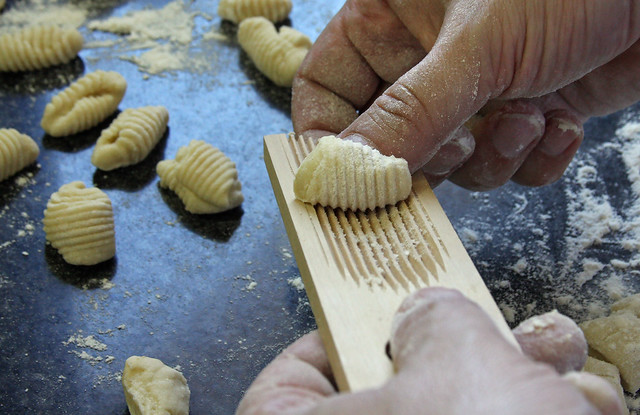 |
| © 2011 Diego Bianchi |
- In a pan put a generous amount of water to boil with some cooking salt. Lift the ñoquis with a spatula or flat tool and drop them (gently!) into the boiling water. Put the lid on the pan and let the water boil again. The ñoquis will start coming up to the surface in just a few minutes. They are ready when they are just "al dente" (firm, but not hard).
 |
| © 2011 Diego Bianchi |
Making the sauce:
- Bake the pancetta slices in a pan without adding any oil or fat. Once they are golden, remove them and chop them roughly.
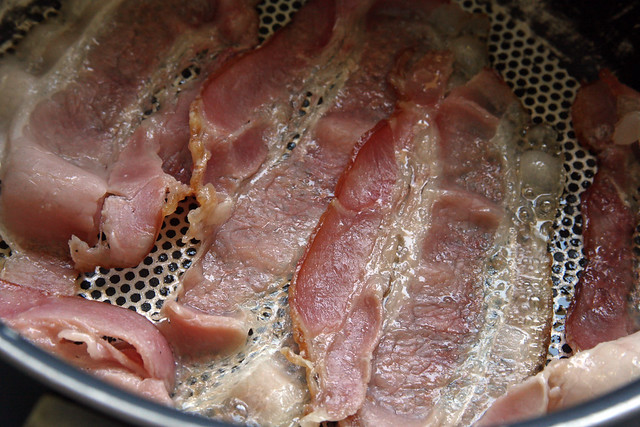 |
| © 2011 Diego Bianchi |
- Now chop the red pepper finely and bake in some olive oil together with the chopped garlic cloves. Once done, add the pancetta, the cream and mix.
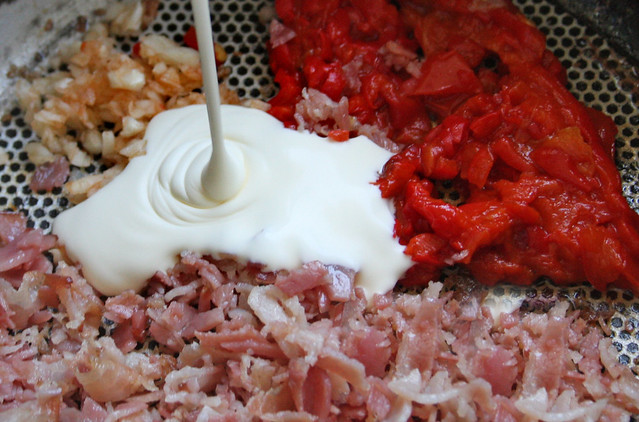 |
| © 2011 Diego Bianchi |
- Then add the mix of dehydrated leeks with tarragon if you have it, or the fresh leeks with the dried tarragon. If you are using the fresh leeks, then let them soften a bit. Add the white wine and let the sauce reduce over a low gas. Don't let the sauce boil.
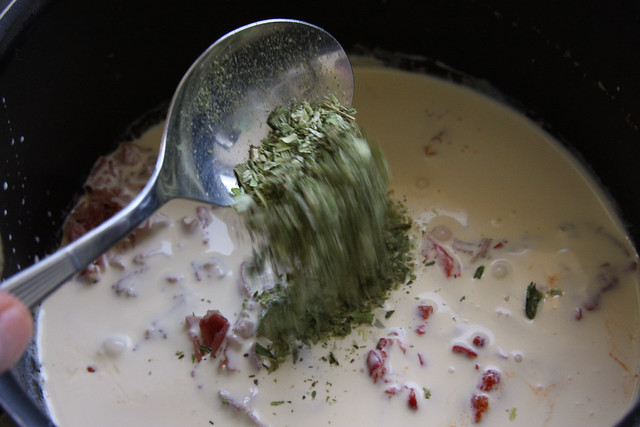 |
| © 2011 Diego Bianchi |
- To thicken the sauce you can add the two teaspoons of flour and let it cook just for a few more minutes. It is now ready to serve.
- Serve the ñoquis on the plates with a generous amount of sauce and sprinkle some very finely chopped parsley over the top.
Buen apetito!
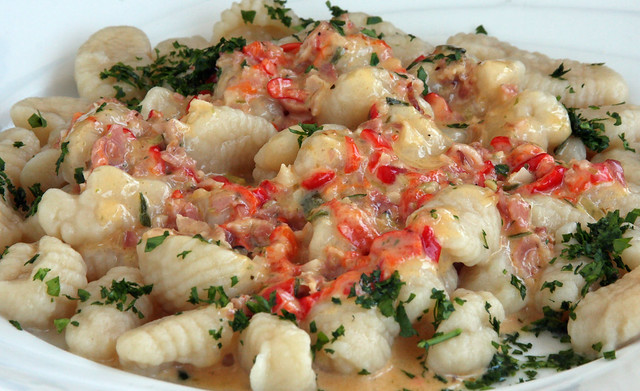 |
| © 2011 Diego Bianchi |
Thanks a lot, Diego, for letting me post your recipe and your fantastic photos!

















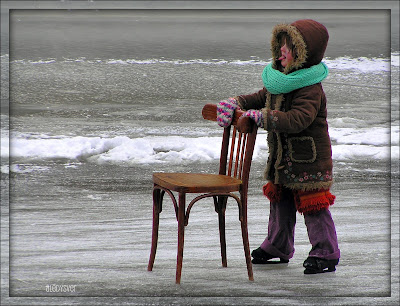





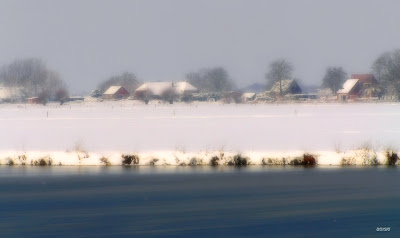






















.JPG)










